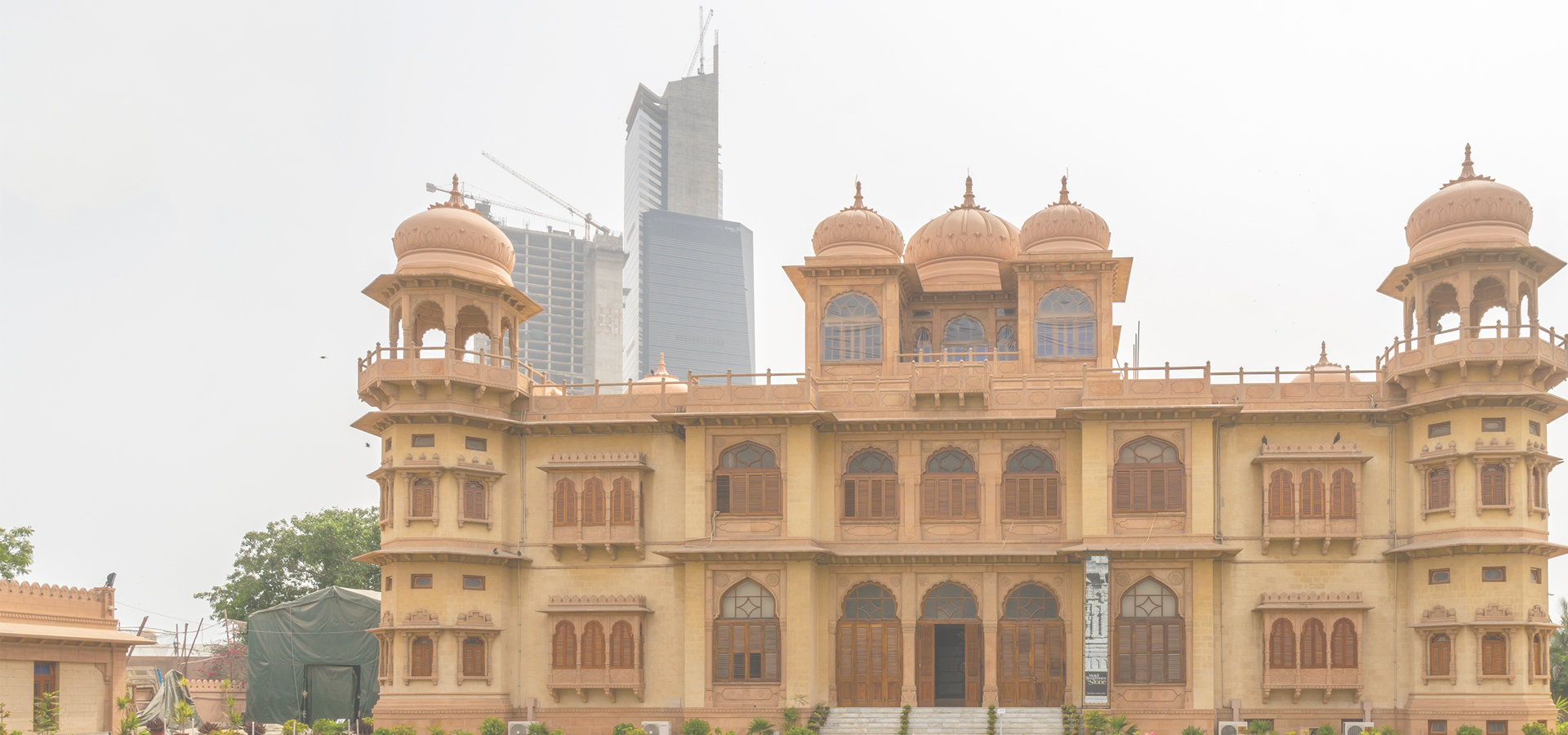Shikarpur, Sindh Province, Pakistan
🇵🇰 🇮🇳 Shikarpur Śikārpūr is city and the capital of Shikarpur District in Sindh province of Pakistan. It is situated about 29 km west of the right bank of the Indus, with a railway station, 37 km north-west of Sukkur. It is the 42nd largest city of Pakistan by population according to the 2017 census.
History According to a few historians the city of Shikarpur was revived during the Kalhora rule and that was what brought about a turnaround in making it the financial capital of not only South Asia but also of Central Asia. Some people think that the city was founded by Kalhoras' cousins Daudpotas – and it was named Shikarpur because the Talpur Mirs were fond of shikar (hunting). Another school of thought believes Shikarpur was admittedly there before the shikar-loving Talpurs arrived on the scene; for another, Shikarpur has always been a trading and banking centre, and never a hunting lodge. Some experts think that Shikarpur is really Shakaripur – the "town founded by the vanquisher of the Shakas", the Scythian.
Shikarpur, the seat of civilisation, culture, trade and commerce acquired political and economic importance because of its strategic location on the map of Sindh, being directly accessible to those who came from Central and West Asia through the Bolan Pass. In the early 17th century this emerald city in the northern Sindh province of Pakistan became the nucleus of a historical trade centre on a caravan route through the Bolan Pass into Afghanistan. Shikarpur became the core of manufactures including brass and metal goods, carpets, cotton cloth, and embroidery. Its great bazaar (covered because of the summer heat) is famous throughout Turkistan and southern Asia.
The predominantly Muslim population of Sindh supported Muslim League and Pakistan Movement. After the independence of Pakistan in 1947, the minority Hindus migrated to India while the Muslims refugees from India settled down in the Shikarpur District. However, like many urban areas in Sindh, the city of Shikarpur was predominantly populated by Hindus prior to the partition of India.
Demography The predominant population is Sindhi. There are significant Urdu, Baloch, Brahui, speaking communities in Shikarpur. The population is mainly Muslim. There is a small Hindu minority in the city as most Hindus migrated to India after independence in 1947.
Geography Shikarpur District has an area of 2,640 square kilometers, divided into four "talukas": • Shikarpur, Sindh • Lakhi, • Garhi Yasin • Khanpur, Sindh.
Its borders meet with districts of Larkana, Jacobabad, Khairpur & Sukkur. Two National Highways (N-65 & N-55) intersect in the city of Shikarpur, so it can well be termed as, one of the junction points of the four provinces.
The district has a total road length of 920.0 kilometers, including 125.0 km of National Highways and 195.0 km of Provincial Highways. It is, thus, deficient in road density (0.35 km/Km²) compared with recognised international parameters of development (1 km/Km²). During the last few years, creeping development activity has taken place and 71.0 km of road, 94 schools and a number of schemes in drainage, health and other sectors have been completed, under various programs. Basically, agrarian economy of district Shikarpur is dependent upon non-perennial irrigation system, so the district is always in semi-drought conditions. The last spell of drought is particularly notable as it created heavy unemployment and unsustainable poverty, which without any doubt created serious law and order situations.
Boundaries The District is bounded on the north and east by Jacobabad District in the south by Sukkur District on the west by Indus River and Larkana District.
Gates of Shikarpur The town consists of seven gates named Lakhi-dar, Hathi-dar, Hazari-dar, Civi-dar, Karan-dar, Wagono-dar, Khanpur-dar, and one window named Siddiqui Mari.
Covered Market or Dhak Bazar Located in the centre of the old city, Dhak Bazaar or covered market is a long, narrow street with shops on either sides. It is covered with woodwork of pure teak. It has been serving as a cool shade during the hot summers. Shikarpur along with other contemporary cities like Bukhara, Samarkand, and Istanbul at that time had a covered street market.
Healthcare • Rai Bahadur Udhaudas Tarachand Hospital (Civil Hospital) • Hiranand Gangabai Ladies Hospital.
Education Notable educational institues located in Shikarpur include Shaikh Ayaz University and Chellaram and Seetaldas College. Institutes have their own libraries, but there is only one public library in Shikarpur named "Qadir Bux Bedil Library".
Asia/Karachi/Sindh

Shikarpur has a population of over 195,400 people. Shikarpur also forms the centre of the wider Shikarpur District which has a population of over 1,231,481 people.
To set up a UBI Lab for Shikarpur see: https://www.ubilabnetwork.org Twitter: https://twitter.com/UBILabNetwork
🇮🇨 San Bartolomé de Tirajana 27.926
🇮🇨 Santa Lucía de Tirajana 27.917
🇵🇰 Mirpur Khas 69
Locations Near: Shikarpur 68.6264,27.9656
🇵🇰 Dera Bugti 69,28.833 d: 103.2
🇵🇰 Islamkot 70.1,28.5 d: 156.1
🇵🇰 Rahim Yar Khan 70.3,28.417 d: 171.5
🇵🇰 Barkhan 69.517,29.883 d: 230.2
🇵🇰 Mirpur Khas 69,25.517 d: 274.8
Antipodal to: Shikarpur -111.374,-27.966
🇵🇪 Callao -77.15,-12.067 d: 16046.6
🇵🇪 San Isidro -77.033,-12.083 d: 16036.8
🇵🇪 Chimbote -78.583,-9.067 d: 15991.5
🇵🇪 Lima -77.033,-12.05 d: 16034.8
🇵🇪 Ancón -77.15,-11.733 d: 16027.1
🇵🇪 Villa El Salvador -77,-12.05 d: 16031.8
🇵🇪 Pisco -76.2,-13.717 d: 16050.7
🇵🇪 Trujillo -79.034,-8.103 d: 15967.4
🇵🇪 Chiclayo -79.844,-6.764 d: 15945.5
🇵🇪 Chincha Alta -76.133,-13.45 d: 16029.9